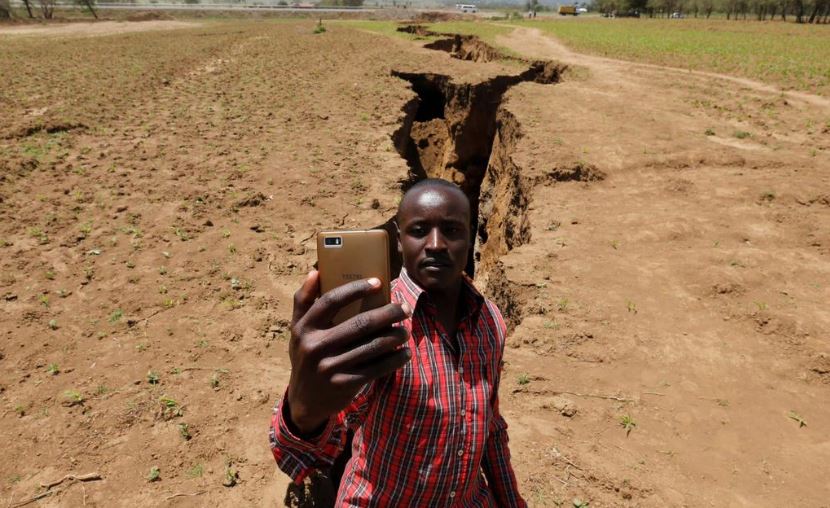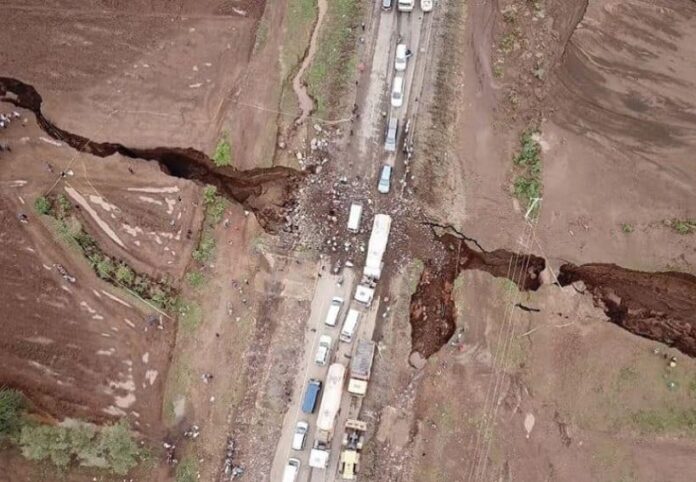In a geological phenomenon that could reshape the map of Africa, the Nubian and Somali tectonic plates are slowly diverging, setting the stage for a dramatic continental split. This process, driven by the forces of plate tectonics, is causing the two plates to drift apart at a rate of approximately 7 millimeters per year. Over the coming millennia, this gradual movement is expected to result in the formation of a new ocean, fundamentally altering the geography of East Africa.
The implications of this tectonic shift are significant for several countries in East and Southern Africa. The rift affects a broad swath of the continent, including Rwanda, Uganda, Burundi, the Democratic Republic of Congo (DR Congo), Malawi, Kenya, Tanzania, Zambia, and Mozambique. As the plates continue to separate, these regions will experience a range of geological and environmental changes.
Also Read: Senegal Halts Mining to Protect Faleme River and Local Communities

The Nubian Plate, which covers much of West Africa, and the Somali Plate, which includes parts of the eastern coast, are pulling away from each other. This rift has already led to noticeable geological activity, including the formation of the East African Rift System. Stretching from the Afar Triangle in the northeast to Mozambique in the south, the rift is one of the most active and well-studied tectonic zones on the planet.
The current rate of divergence, at 7 millimeters annually, may seem slow, but it has profound long-term implications. In the next 5 to 10 million years, this gradual movement could culminate in a complete separation of the African continent. The space between the Nubian and Somali plates is expected to widen, eventually filling with water and creating a new ocean. This process is reminiscent of how the Atlantic Ocean formed millions of years ago, when the supercontinent Pangaea began to break apart.

For the countries impacted by this rift, the effects will be wide-ranging. In the short term, there could be increased seismic activity, including earthquakes and volcanic eruptions. Regions along the rift zone might experience land subsidence and changes in water bodies as the earth’s crust adjusts to the shifting plates. Long-term consequences could include significant shifts in climate patterns, which might affect agriculture, water resources, and biodiversity in the affected areas.
The potential for a new ocean could also have far-reaching economic and ecological impacts. As new coastlines emerge, maritime navigation routes will change, potentially opening up new trade routes and resources but also creating new geopolitical challenges. Additionally, the development of a new ocean could lead to the creation of new marine ecosystems, affecting both local and global biodiversity.
While this geological process is unfolding on a time scale that far exceeds human lifetimes, its impact will be deeply felt by future generations. The divergence of the Nubian and Somali plates is not just a scientific curiosity but a pivotal moment in Earth’s geological history, illustrating the dynamic and ever-changing nature of our planet. As scientists continue to study this remarkable phenomenon, they provide crucial insights into the forces shaping our world and the future of the African continent.
Key Points:
- Tectonic Plates Diverging:
- The Nubian and Somali tectonic plates are diverging at a rate of 7 millimeters per year.
- Geological Impact:
- This divergence is part of a process that could eventually split the African continent.
- Future Ocean Formation:
- The complete separation of the plates is expected to result in the creation of a new ocean in 5 to 10 million years.
- Affected Countries:
- The split will impact Rwanda, Uganda, Burundi, DR Congo, Malawi, Kenya, Tanzania, Zambia, and Mozambique.
- Short-Term Effects:
- Increased seismic activity, including earthquakes and volcanic eruptions, is anticipated in the affected regions.
- Long-Term Consequences:
- Potential changes in climate, water resources, agriculture, and biodiversity are expected.
- Economic and Ecological Impacts:
- The formation of a new ocean could alter maritime navigation routes, open new trade opportunities, and create new marine ecosystems.



